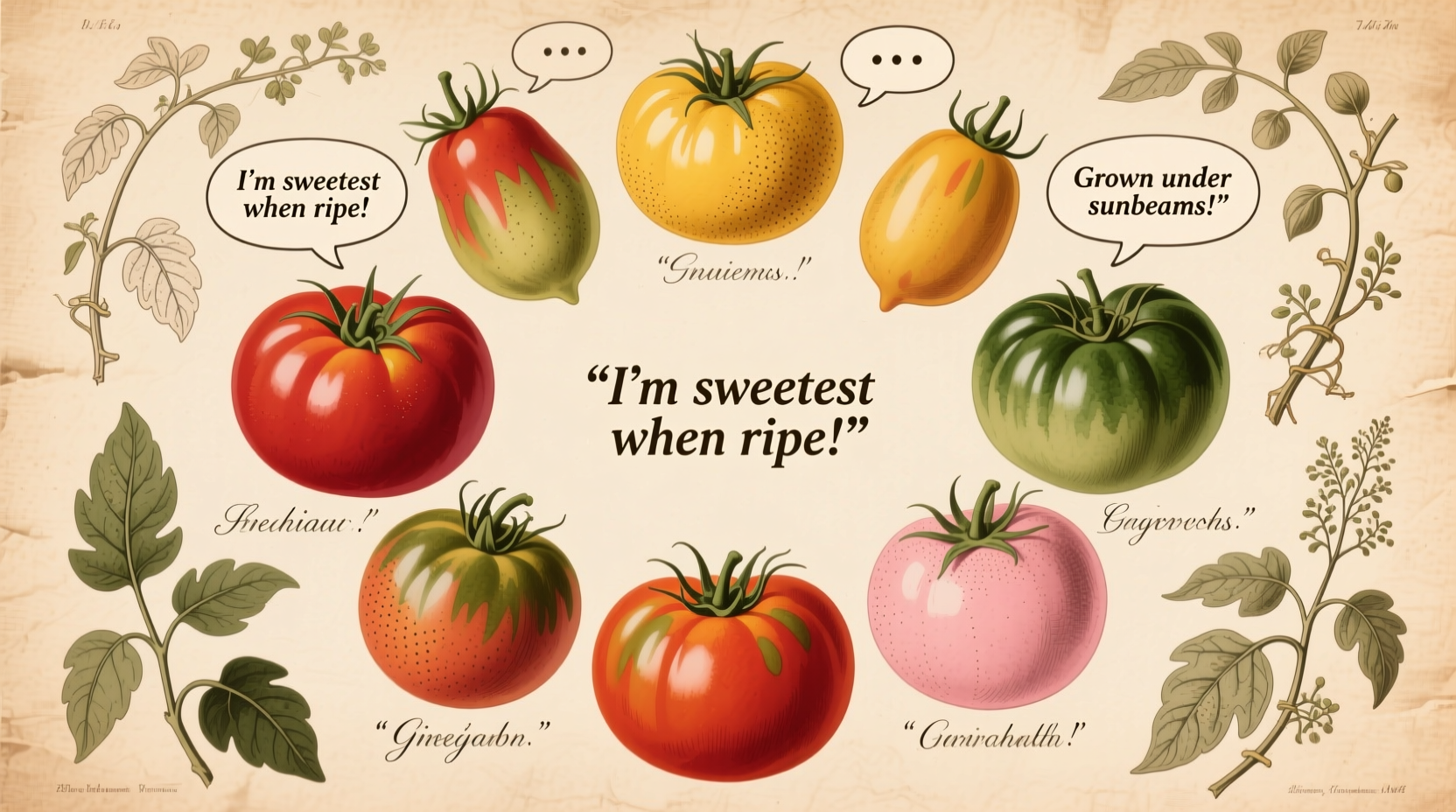When someone mentions a 'tomato saying,' they're typically referring to the classic linguistic expression 'tomato, tomato'—a lighthearted way to acknowledge trivial disagreements in pronunciation or perspective. This phrase has become embedded in everyday conversation as a metaphor for unimportant distinctions that don't affect the core meaning or substance of what's being discussed.
What 'Tomato, Tomato' Really Means
The 'tomato saying' functions as a conversational tool to diffuse minor conflicts about pronunciation or trivial differences. When two people pronounce 'tomato' differently—tuh-MAY-toe versus tuh-MAH-toe—saying 'tomato, tomato' acknowledges that while the pronunciation differs, the underlying subject (the fruit itself) remains the same. This expression has evolved beyond its literal meaning to represent any situation where two parties disagree on superficial aspects while agreeing on the fundamental issue.
Linguists classify this as a minimizer idiom—a phrase specifically designed to downplay the significance of a disagreement. Unlike arguments about substantive matters, 'tomato, tomato' situations involve differences that don't impact outcomes or understanding.
Historical Evolution of the Expression
The 'tomato, tomato' saying gained widespread popularity through its memorable use in George and Ira Gershwin's 1937 song Let's Call the Whole Thing Off, where the lyrics contrast various pronunciation differences:
"You say eh-ther and I say eye-ther,
You say neh-ther and I say nye-ther,
Tomato, tomahto, potato, potahto,
Let's call the whole thing off!"
| Time Period | Development Stage | Key Milestones |
|---|---|---|
| 1890-1920 | Emergence | Regional pronunciation differences documented in American English dialect studies |
| 1937 | Popularization | Gershwin brothers feature the phrase in 'Let's Call the Whole Thing Off' |
| 1940s-1950s | Cultural Integration | Becomes common expression in American film and theater |
| 1980s-Present | Global Expansion | Adopted internationally as shorthand for trivial disagreements |
This timeline illustrates how a simple pronunciation difference evolved into a widely recognized cultural expression. According to research from the Merriam-Webster Dictionary, the American vs. British pronunciation distinction dates back to the 19th century, with the American version emphasizing the second syllable while British English places stress on the first.
Regional Pronunciation Differences
The core of the 'tomato saying' stems from genuine pronunciation variations across English-speaking regions:
| Region | Pronunciation | Phonetic Spelling | Common Usage Context |
|---|---|---|---|
| United States | tuh-MAY-toe | təˈmeɪtoʊ | Standard American English |
| United Kingdom | tuh-MAH-toe | təˈmɑːtoʊ | Standard British English |
| Australia/New Zealand | tuh-MAH-toe | təˈmɑːtoʊ | Common in Commonwealth countries |
| Canada | Mixed usage | Variation by region | Eastern Canada favors British pronunciation |
These pronunciation differences aren't arbitrary—they reflect historical linguistic developments. The British pronunciation maintains closer alignment with the original Spanish tomate, while American English evolved toward a more anglicized version. The Encyclopædia Britannica explains that such variations often emerge from different approaches to adopting foreign words into English.
When and How to Use the Tomato Saying Appropriately
Understanding the proper context for 'tomato, tomato' prevents miscommunication. This expression works best in situations where:
- Differences are genuinely trivial and don't affect outcomes
- Both parties agree on the fundamental issue
- The disagreement centers on terminology rather than substance
- Conversation needs lightening without dismissing concerns
However, the expression has clear limitations. It shouldn't be used when:
- Technical precision matters (scientific, medical, or legal contexts)
- Differences actually impact results or understanding
- One party feels their perspective is being minimized unnecessarily
- Cultural sensitivities are involved
Language experts from the Oxford Research Encyclopedia of Linguistics note that misapplying minimizer idioms like 'tomato, tomato' can undermine legitimate concerns when differences aren't actually trivial.
Related Food-Based Expressions
The 'tomato saying' belongs to a broader category of food-related idioms that highlight trivial differences:
- Potato, potato - Functions identically to the tomato expression
- The whole enchilada - Meaning 'the complete package' (often confused with 'the whole tomato' in some regions)
- Don't make a mountain out of a molehill - Advising against exaggerating minor issues
- Splitting hairs - Focusing excessively on trivial distinctions
These expressions share the common theme of addressing disproportionate attention to minor details. Culinary idioms often resonate because food represents universal human experience—something everyone understands regardless of background.

Avoiding Common Misuses
Even simple expressions can be misapplied. Watch for these common mistakes with the tomato saying:
- Using it to dismiss valid concerns - Not all differences are trivial; some distinctions matter significantly
- Applying it cross-culturally - The expression doesn't translate well to non-English contexts
- Overusing the phrase - Diminishes its effectiveness when deployed too frequently
- Confusing it with actual tomato-related proverbs - Unlike 'tomatoes in August,' which refers to abundance, 'tomato, tomato' specifically addresses pronunciation differences
When in doubt about whether to use the expression, consider whether the difference genuinely affects the outcome. If the distinction changes results or understanding, a different approach might be more appropriate than invoking the 'tomato saying.'
Practical Applications in Daily Communication
Mastering the 'tomato saying' enhances communication in several practical scenarios:
- Team meetings - Diffusing minor disagreements about terminology while maintaining focus on shared goals
- Customer service - Acknowledging different ways to describe the same issue without invalidating the customer's perspective
- International communication - Bridging pronunciation differences between English dialects
- Conflict resolution - Identifying when disagreements are superficial rather than substantive
The most effective communicators use the 'tomato saying' as a tool for building rapport, not as a way to avoid legitimate discussion. When employed thoughtfully, it demonstrates linguistic awareness and emotional intelligence.
Conclusion: The Enduring Appeal of Simple Expressions
The 'tomato saying' endures because it addresses a universal communication challenge—distinguishing between meaningful differences and trivial variations. In our increasingly polarized world, having linguistic tools to acknowledge minor disagreements while maintaining focus on shared understanding has never been more valuable. By understanding both the proper usage and limitations of expressions like 'tomato, tomato,' we can communicate more effectively across differences while preserving meaningful distinctions where they matter.











 浙公网安备
33010002000092号
浙公网安备
33010002000092号 浙B2-20120091-4
浙B2-20120091-4